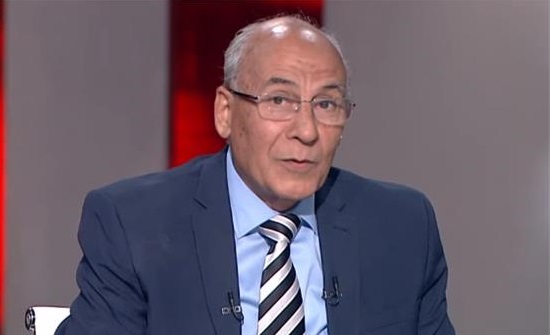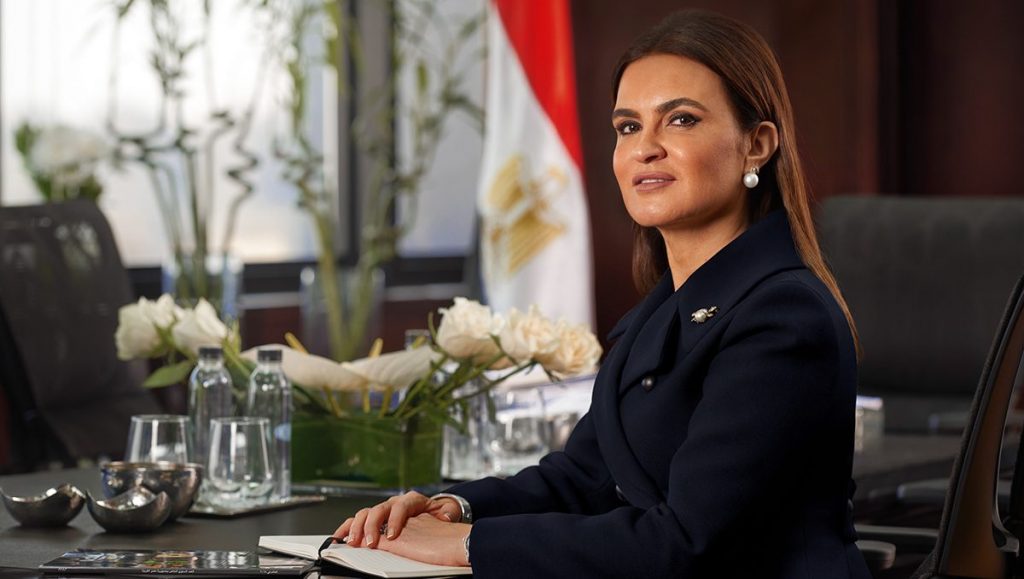With the government’s ambitious plans to build new infrastructure, public service, and utility facilities, Parliament passed amendments to Law 67 for 2010 in November to attract more private sector companies.
Few doubts linger over the current administration’s prioritization of infrastructure, public services and utility investments. At the November Al Mal GTM investment conference, the state unveiled plans to build 45 new cities by 2052, highlighting the importance of those projects.
Talking to the media in October, Hala El-Said, minister of planning and economic development, said the government wants the private sector to do most of the heavy lifting as partners to design, fund, build, operate and maintain such projects.
However, working with the government has never been smooth sailing. To attract private companies into such labor- and capital-intensive projects, the current Parliament in November approved amendments for Law 67 for 2010. “The changes aim to regulate private sector participation in infrastructure, public services and utility sectors,” Minister of Finance Mohamed Maait said during a November meeting in Parliament.
The modifications aim to expedite submission and approval processes, allow new contract formats and support the private sector in securing funding. Achieving those aims could prove paramount in realizing the government’s ambitious near-term plans.
Starting point
The idea of involving the private sector in infrastructure, public service and utility projects began in 2006, allowing local and foreign investors to build and operate such facilities. The aim was to spare the government the expense of constructing and operating those vital and capital-intensive facilities.
The government created a Central Department for Partnerships within the Ministry of Finance in 2006 to oversee the process to promote specific projects and manage contracts with private investors. Its mandate includes providing land and extending infrastructure, such as electricity and water, to the perimeter of those plots. Private developers would be responsible for utilities within their assigned parcels.
Currently, all partnerships are subject to Law 67 for 2010, which stipulated that private contractors could design, fund, construct and operate projects for no more than 30 years. After the contract expires, the facilities would be turned over to the government. The 2010 law, whose executive regulations passed in January 2011, allowed the prime minister to extend those contracts.
Implementation over the following two decades revealed some cracks. And with the current administrations focus on reforming Egypt’s investment environment since coming to power in 2015, necessary changes to the partnership law were a low priority. As a result, the first draft of the amendments didn’t appear until December 2019, just before the COVID-19 pandemic.
With Parliament focused on pandemic-related legislation to keep the local economy growing, the partnerships law amendments were set aside until last month.
Modification philosophy
Maait told MPs that the changes to the 2010 law were needed to address issues that appeared during implementation.
He partially blamed front-line government officials in various administrative departments for not understanding the original law’s philosophy. The other issue was that the 2010 law’s procedures were too complicated, particularly the documents required when submitting proposals for infrastructure, public service and utility projects.
Maait noted that it took too long to approve and announce the winners of such projects. That is no longer viable in light of the current government’s ambitious plans to increase Egypt’s livable area to 14% of the country by 2030 from nearly 9% in 2020 and upgrade existing infrastructure. “The 2010 law was always hindering us,” he said.
The amendments aim to “simplify those procedures, thereby expediting the proposal submission process, which will reflect on the time it takes to select winners and contract them,” said Maait.
What’s changed: scope, oversight?
The first change is that private sector companies can submit tenders for a broader range of projects announced by the Central Department for Partnerships. In addition, the modified Article 2″ allows the government to give a project to a single or multiple private contractors.
Private sector proposals can be for one or more aspects of a project, such as designing, funding, constructing, operating, owning or maintaining a facility. The aim is to include as many qualified private companies as possible.
Changing “Article 28” allows multiple private sector companies to submit a “consortium-style” proposal. In some cases, however, the Central Department for Partnerships requires individual investors to submit separate proposals for their roles.
Another significant change to the 2010 law is the government can no longer extend contracts beyond 30 years.
The modified law also creates an independent “Supreme Council for Partnerships” for each proposal to determine its viability. Approvals will take into account the Central Department’s recommendations, and its decisions will be final. A modified “Article four” requires the minister who suggested the project to the Central Department for Partnerships to be a member of that council.
Its members must comprise three representatives. One is from the Finance Ministry, the other from the ministry that submitted the project, and the third from the Central Department for Partnerships. Additionally, there must be five members from relevant ministries or experts inside or outside the government on the council.
The prime minister appoints the council’s head based on a recommendation from the minister who submitted the project.
What’s changed: Approvals?
Changes in “Article 3 and 15” oblige the government to seek approval for individual projects designated for partnerships from both the Central Department for Partnerships and the High Council for Partnerships. Once green-lit, the government must include each project’s technical and financial details, including the tender date, in the upcoming fiscal year’s budget and investment plans.
Under the new amendments, the designated minister’s involvement starts with the project submission to the Central Department for Partnerships and continues until the contract signing with the private contractor. In the past, those ministers would be involved until the Central Department for Partnerships approved the project designated for partnership.
Changes to the 2010 law include a new “Article 17” and a modified “Article 18.” They prohibit any ministry or government agency from announcing or disclosing any project details before approval from the Central Department for Partnerships and High Council for Partnerships. “Article 18” also prohibits the formation of any subcommittee that discusses projects designated for partnerships without a representative from the Central Department for Partnerships.
Those two entries are vital as they ensure that plots aren’t double or triple booked for infrastructure, public services, or utility projects submitted by different government agencies.
What’s changed: Process, Procedure?
Amendments to “Article 20” allow the government to choose the best cooperation model for individual projects. Examples suggested by the modified regulation include direct contracting, taking on a project proposed by a private company, and the conventional bidding approach.
Yet, the modifications now obligate the government to set detailed and stricter quality standards and other restrictions on each project eligible for partnership as a form of quality control. The government must also specify implementation timeframes for each project and create a national map of the locations and nature of projects designated for partnerships. Also, the amendments allow government oversight and follow-up throughout the project’s implementation phases.
In the outgoing version, all partnership infrastructure, public services and utility projects required a “pre-qualification” stage to ensure applicants could meet all requirements. Not anymore. Changes to “Article 21” make that stage “optional,” based on the nature of the project.
The newly approved articles in the 2010 law also significantly reduce the application-submission window, which starts with publishing details of projects designated for partnerships.
The amendments also shortened the time to file a grievance request: It begins after the Central Department for Partnerships announces a winner and ends before signing the contract, according to changes in “Article 39.” The Grievances Committee has only 10 days to decide each case and its decisions are final. The finance minister would always head that committee, with members including two representatives from the State Council, the head of the Central Department for Partnerships and a nongovernment specialist appointed by the minister.
What’s changed: Bidding Process?
When bidding to assign government projects, the old law decreed that the best technical offer at the lowest price would win. In the new version of the law, that would function differently.
The High Council for Partnerships could sideline submissions that meet the project’s technical requirements if their financial offers are too high or low compared to other bids or are outside the government’s “benchmark reference” for the project. A new “Article 19” ensures balancing the economic and financial benefits of each submission while guaranteeing transparency and fairness when comparing private sector applicants.
Meanwhile, changes in “law entries 23, 32, and 39” allow the selection committee to hold a closed-door meeting with the sidelined private firm to ask why its financial offer is significantly different from the rest, given that it meets the project’s technical requirements. That option aims to ensure the best option is selected.
Investments to come
The amendments come as the government announces multiple mega projects involving infrastructure, public services and utilities in existing and new cities. “They have been fueling vast investments in construction, housing, transportation, power, sanitation, water and other infrastructure to care for the needs of future residents,” said AmCham Egypt’s infrastructure insight report in July.
According to the Ministry of Planning data, infrastructure, public services and utility investments in FY 2021/2022 will reach EGP 748.6 billion, compared to EGP 481.6 billion a year earlier. That is nearly 60% of the state’s budget this fiscal year.
Over half of that amount will go to transportation (51.4% of the total). That includes plans to build 1,000 bridges and tunnels by 2024, according to a Ministry of Transportation announcement in August 2020. Road construction also is a high priority under the “Smart Transportation Project” announced in September 2020.
According to AmCham Egypt’s July report, most planned new roads will link the New Administrative Capital to the rest of Egypt. There also is the 1,150-kilometer highway connecting Cairo with Aswan, of which 230 kilometers have been completed. And $142 million is allocated for roads in New Alamein City.
Private investors could find opportunities in infrastructure, public services and utility projects supporting Egypt’s first monorail and high-speed train between Greater Cairo and the New Administrative Capital. Meanwhile, plans to expand Cairo International Airport’s Cargo City are in the works, as are projects to expand dry ports and seaports in 6 October City, Damietta, Alexandria and Abu Qir.
Additionally, the Suez Canal Authority plans to widen the waterway to better handle mega freighters, such as the Ever Given, which got stuck in April for six days. That region also should see an uptick in infrastructure, public services and utility projects as the government tries to attract investments to the Suez Canal Free Economic Zone.
Other significant investments will go to housing (23.5% of the infrastructure investment budget), education (7.4%), healthcare (6.3%), energy (5.7%), water and sewage (3%), and ICT (2.5%), according to Planning Ministry data.
A significant portion of these infrastructure, public services and utility projects must comply with the government’s Environmental Sustainability Standards guide. During a workshop in March, El-Said, the planning minister, said the government’s strategy is to increase sustainable investments in infrastructure by 30% this fiscal year.
El-Said added that the planning and environment ministries are still working on the “Guide to Environmental Sustainability Standards: The Strategic Framework for Green Recovery,” which will underpin all future infrastructure, public service and utility projects. “This guide will be … one of the most important and successful green transformation methodologies … for achieving sustainable development,” Minister of Environment Yasmine Fouad told the media in March.







